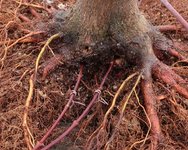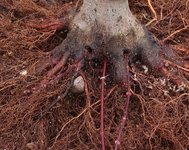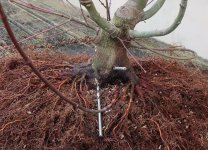clem
Omono
i don't know why some grafts died and this one survived.. The three thread grafts to produce roots had all some space in the hole to thicken.. All of them couldn't move in the greehouse (no wind).What was the difference then @clem? I would think the one with tourniquet took because it was kept better in place and had no space to move?
You can see on those 2 pics the 3 holes and 3 thread grafts this spring ->


Maybe 2 branches died because of the tourniquet, which strangled them ? That's why next spring, i won't put tourniquet on them. To see if they survive and to see if they produce roots without any tourniquet.










